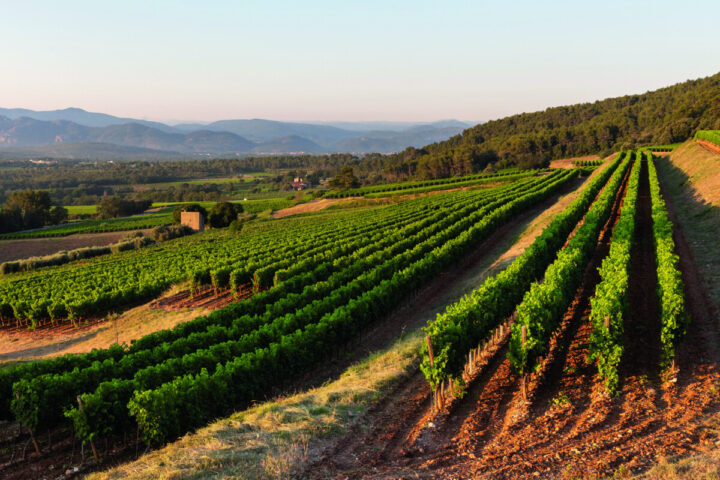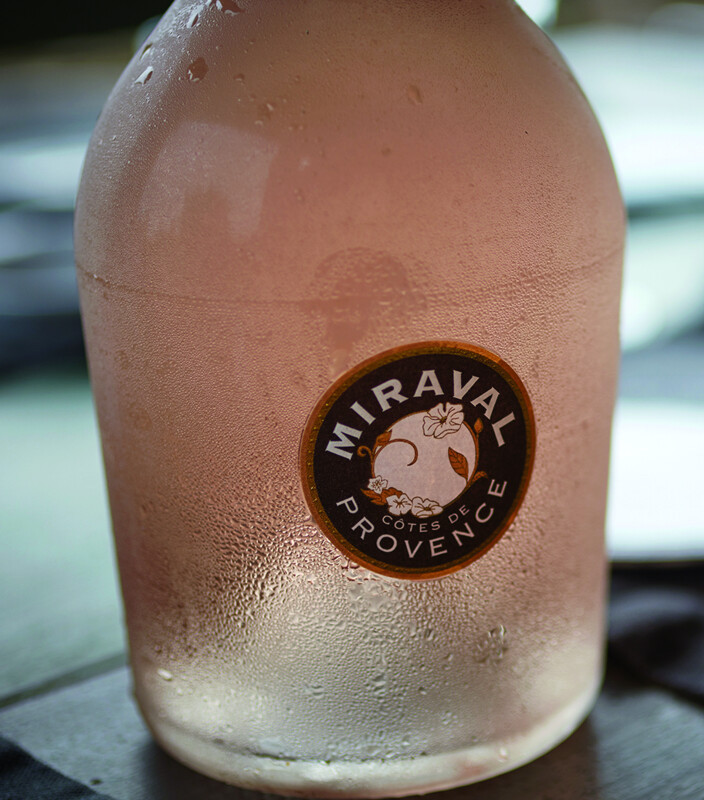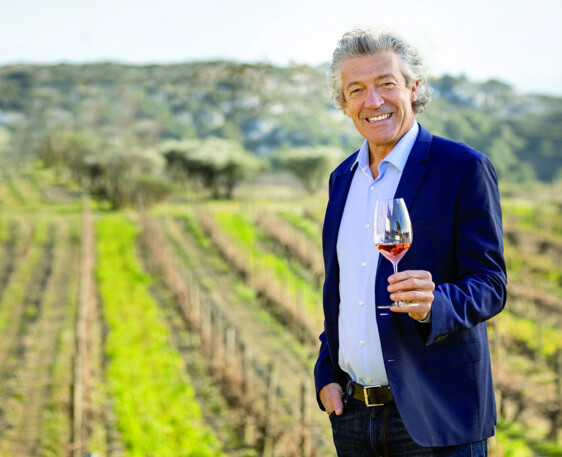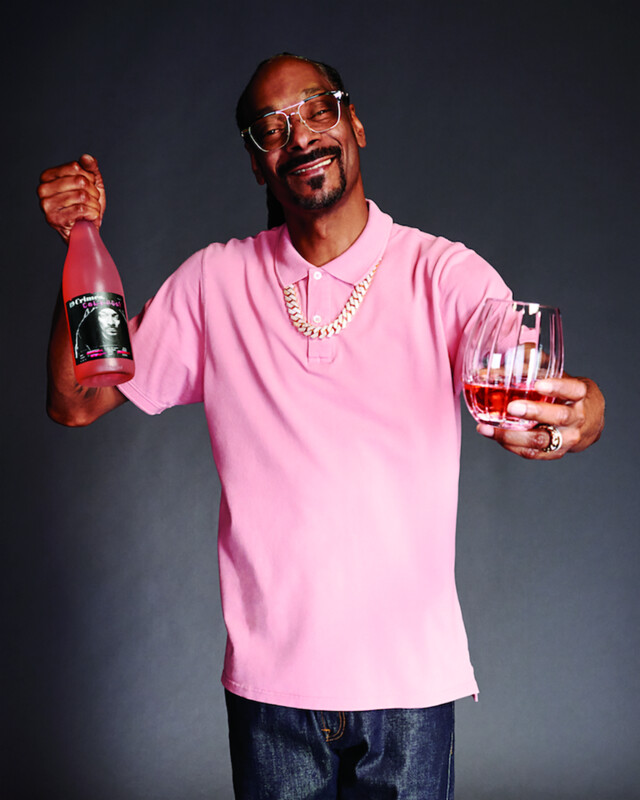
For the past two decades, the rosé boom has been led by the wines of Provence, whose gains have been one of the great stories of the U.S. drinks market. As the market becomes more populated with new entries from Provence and Languedoc, as well as brands from other countries like Italy, the U.S., and Chile, it’s all a welcome development—especially for on-premise operators like artist and illustrator Cerise Zelenetz. She opened Brooklyn, New York wine bar Cherry on Top in September 2021 to highlight a variety of wine producers from around the world. Rosé is featured on the natural wine bar’s menu in a range of styles spanning from super-light Provence-style rosés to more obscure blends from Austria, Spain, and Italy, as well as sparkling options that are favorites in the spring and summer. Current by-the-glass options include France’s Domaine De Valdition Alpilles Rosé ($12 a glass; $48 a 750-ml.), Germany’s Weingut Schmitt Frei.Körper.Kultur Rosé ($16; $70), and Italy’s La Chimera Eos Rosato Frizzante ($16; $64).
Cherry on Top’s current resident chef Andrew Peña serves a selection of seasonal tapas that go with the rosés on offer. “Our Provence rosé by the glass pairs well with everything, honestly, as it’s so light and refreshing, but especially the fresh bass crudo,” says Zelenetz. “Our darker rosés, like our Rosado from Bodegas Gratias in Spain, are wonderful with Chef Peña’s albondigas.”
Throughout the rosé category, France was the only region to post gains last year, with the country’s leading labels increasing 1.6% to 2.6 million cases, according to Impact Databank. Provence rosés continue to have solid appeal in the market, with exports to the U.S. rebounding in 2022 to nearly 1.9 million case shipments, following the tariff-burdened years of a trade dispute from 2019- 2021. Meanwhile, the top non-French imported rosés, primarily from Italy and the Southern Hemisphere, shed 10.5% to 727,000 cases in 2022, while total leading domestic rosés fell 11.2% to 2.2 million cases. As with other wine segments, most rosé growth is in the $15-plus range.

France Reigns
French labels have become synonymous with rosé, even as the segment grows more crowded, with new selections hailing not only from France but also other rosé-producing regions. After three straight years of annual declines in rosé wine shipments from Provence, 2022 exports to the United States rose 4%, according to Impact Databank. Import volume is still below pre-pandemic levels, but the shipment value of Provence rosé is higher now than in 2019, up to a new all-time high of €143.4 million ($151.1 million). And while the double-digit gains of the past two decades are now in the rearview mirror, French rosés, like kiwi Sauvignon Blancs, remain one of the few bright spots in an otherwise sluggish U.S. wine market. Each of the top five French rosé brands posted gains last year, for a combined 5.3% increase to 1.7 million cases.
“Given the steady growth we’ve seen in the category, I expect we’ll continue to see the growth of French rosés, and specifically Provence,” says Paul Chevalier, vice president of Château d’Esclans at Moët Hennessy USA, noting that the company’s Whispering Angel has become the benchmark for the category. “While domestic-produced rosés from California and Long Island, New York, are gaining traction, Provence rosé continues to lead category sales and currently holds 63% of rosé share on Drizly.”
Whispering Angel ($22 a 750-ml.) remains the market leader, growing 1.1% last year to 570,000 cases. That total does not include portfoliomate The Beach by Whispering Angel ($18), which was introduced in 2022 as a rebrand of the winery’s entry-level rosé, previously known as The Palm. The Beach, like the Palm before it, is aimed at Millennial and Gen Z consumers entering the rosé category. The rebranded wine is still sourced from the south of France and made from Grenache, Cinsault, and Syrah. The Beach comes with a focus on sustainability, featuring lighter glass and making its debut with a partnership with the Surfrider Foundation, an ocean preservation-focused non-profit. The No.-5 French rosé last year, The Beach grew 8% to 162,000 cases. With the increased demand in prestige rosé, investments in the region continue to grow. In February, Moët Hennessy purchased a majority stake in Provence estate Château Minuty, which includes the popular Minuty M Rosé ($16).

“The French rosé market in the United States is very competitive, but in a healthier way than in the past. For a while there, everyone was making a rosé, and many of them weren’t particularly well-made or interesting,” says Greg Doody, president and CEO of Vineyard Brands. “In recent years, many of the rosés that shouldn’t have been made in the first place disappeared from the market, leaving ‘real’ rosés to thrive. We continue to see strong demand for our French rosés, particularly for La Vieille Ferme, Miraval, and Studio by Miraval.”
The company’s top SKU is La Vieille Ferme ($8 a 750-ml.), with the total brand at 625,000 case depletions last year, and the rosé accounting for 414,000 cases, or 66% of that total. That includes both still and sparkling wines. Miraval ($28), Vineyard Brands’ second most popular label, is its super-premium rosé offering and is the No.-4 French rosé, growing 3.8% to 164,000 cases in 2022. Studio by Miraval, which was launched in 2019, falls in the mid-range price point of $19.
As the birthplace of rosé wine, Provence’s appeal to U.S. wine drinkers transcends market trends and plays into a lifestyle that focuses on fine cuisine and an appreciation of terroir. Mathilde Chapoutier Selection, imported by California-based importer and marketer Folio Fine Wine Partners, offers Côtes de Provence Sainte-Victoire Aurisso ($29 a 750-ml.) and Côtes de Provence Orsuro ($21). “Vin de Provence is a reference for good quality, lovely wines,” says Folio Fine Wine Partners brand director Irene Habermeier. “It’s a beloved appellation on restaurants’ wine lists, compared to other rosés. Connoisseurs and occasional wine drinkers appreciate the Provençal wine style.”
President and CEO of Terlato Wines Bill Terlato agrees that Provence has staying power. “Consumers will weed through, and even if there are other producers Provence rosé will continue to grow,” he says. “And if they’re not able to provide as much as the market can support, I think other rosés will grow as well. But they’re going to have to be high quality.” In September 2021, Terlato Wines entered into an exclusive sales and marketing agreement with Bruno Paillard, which includes Les Sarrins Côtes de Provence rosé. According to Terlato, Les Sarrins is now in more than 4,000 accounts nationally, moving 20,000 cases in its first year in the market, with growth projected.
New York-based Provence Rosé Group imports a selection of classic rosés from Château de Berne and Ultimate Provence, including Berne Romance IGP Méditerranée Rosé ($17 a 750-ml.), Berne Inspiration Côtes de Provence Rosé ($22), and Ultimate Provence Rosé AOP Côtes-de-Provence ($24). “Not many places have the history and know-how with blending that Provence has,” says Provence Rosé Group CEO for North America Bob Gaudreau. “In Provence, Château de Berne has been making rosé for well over 200 years.”

Beyond Provence
But while rosé’s continued popularity can be credited primarily to Provence, brands from other regions of France are making inroads; some are doing so by emulating their Provençal counterparts, while others are capitalizing on varietals and styles different from those traditionally championed by the French. Aside from Provence, other areas that registered rosé wine growth in 2022 include Beaujolais, which doubled its import value last year; Rosé of Cabernet d’Anjou from the Loire Valley, which grew 5%; and French rosé not from a specific appellation or from a specific grape saw an increase of 35%, according to Impact Databank.
The biggest success story outside of Provence is Gérard Bertrand, whose flagship rosé ($26 a 750-ml.) posted double-digit gains in 2022 at 13% to 390,000 cases. The No.-3 largest French rosé brand is among several rosés performing well for the company, according to Bertrand, including Hampton Water ($17), which is made in partnership with singer Jon Bon Jovi and his son Jesse Bongiovi, and which grew 51.1% to 63,000 cases. Betrand’s rosé lineup also includes Clos de Temple ($165) at the luxury end and more accessibly priced offerings like Source of Joy ($20), Gris Blanc rosé ($18), and Cote de Roses ($12). These five rosés make up more than 60% of the company’s total U.S. sales.
“France is a benchmark; nobody can compete with us in terms of quality versus quantity, because we have the expertise, we have the sourcing, we have the quality, and we have the knowledge,” notes Bertrand. “People who want to follow will sell a little bit. But at the end, to compete with us, you need to develop the terroir effect. To develop the terroir effect requires time, because you need the old vines, as well as consistency. That is why we have a real advantage.”
In addition to the namesake Gérard Betrand label and Hampton Water, there were several other double-digit gainers in French rosé last year, including 90+ Cellars ($13 a 750-ml.) from Latitude Beverages, which rose 11.5%; Maison No. 9 ($18) from E. & J. Gallo, which increased 10%; and The Pale by Sacha Lichine ($15) from Shaw-Ross International, which jumped 13%.
As France continues to dominate the rosé segment, imports from other regions struggled to make headway last year. A handful of imported rosés from outside France posted positive gains in 2022—including Chile’s Natura Rosé ($12 a 750-ml.) from Banfi Vintners, which grew 18%, and Italy’s Ruffino rosé ($17), which inched forward 1.1%—though the vast majority of the leading non-French imports struggled to gain a foothold stateside.
Even so, Terlato still sees potential for growth of non-French rosés in the upscale rosé segment. Italian producers especially are taking advantage of the new Prosecco rosé designation to boost quality and appeal of the sparkling wines. Terlato Wines’ most recent launch from Italy’s Feudi di San Gregorio, Visione Rosé, specifically targets the super-premium rosé category, retailing at around $32 a 750-ml. “We have two Italian Rosés, Il Poggione Brancato Rosé and the Feudi di San Gregorio Visione,” he says. “The Italian rosé volume in the category grew 24%. So it’s chipping away, and taking some share from France.”

Domestic Ups And Downs
Leading domestic players found a challenging rosé market in 2022. While California labels like Woodbridge by Robert Mondavi Rosé ($9 a 750-ml.) from Constellation Brands grew 15% and up-and-coming Angels & Cowboys ($16) from Share a Splash Wine Co., which included still and sparkling, increased 51%, Treasury Wine Estates’ 19 Crimes Snoop Cali Rosé ($13) fell 35% after a strong debut in 2021. Despite this loss, the label remained the market’s No.-6 domestic rosé, and the company sees enduring popularity and loyalty with new wine consumers. “Cali Rosé successfully invites younger adult consumers into the category by making the typically more formal varietal less formal and more fun and approachable for a new generation of consumers,” says Treasury Americas president Ben Dollard. He points to IRI data for the 52 weeks ending March 26, 2023, which shows that 36% of Cali Rosé consumers were completely new to wine.
Several selections from neighboring Washington State had a stronger showing, however. Chateau St. Michelle ($11 a 750-ml.) grew 7.5% to 150,000 cases, while portfoliomate 14 Hands ($12) jumped 10.5% to 42,000 cases, including still and sparkling wine. Union Wine Co.’s House Wine Rosé Bubbles ($5 a 375-ml. can), meanwhile, increased 3.5% to 135,000 cases.

The leading domestic rosé, Delicato Family Wines’ Bota Box, was down 6% to 300,000 cases. The popular California boxed wine brand, which has seen consistent growth overall and is among the top brands by volume nationwide, has two rosés: Bota Box Dry Rosé ($17 a 3-liter box) and Bota Box Breeze Dry Rosé ($20), its better-for-you offering launched in 2021.
“Following overall wine category trends, lower-priced rosés are seeing declines, while the higher priced segments are doing better,” says Delicato vice president of brand marketing Kathy Pryce. “The bright spots for domestic producers are in higher priced rosé and light rosé. Given the growth of the light wine segment, I wouldn’t be surprised to see more light rosé offerings come to market in the near future.” She points to the success of Bota Box Breeze Dry Rosé to underscore this trend, noting that it’s the No.-1 wine in the light rosé category and claimed an 18% dollar share of the category over last year, significantly outperforming the total rosé category.
While non-French rosés slowed last year, the staying power of the category remains strong. Marketers are responding with complex, higher-end offerings as consumer tastes mature. And while French rosés appear set to continue dominating, marketers of brands from other countries believe there’s room to expand the pie. “From a value and quality perspective, consumers get to drink really great wines at really affordable prices within the rosé category,” says Provence Rosé Group’s Gaudreau. “Nobody is excluded from being able to have a great glass of rosé.”